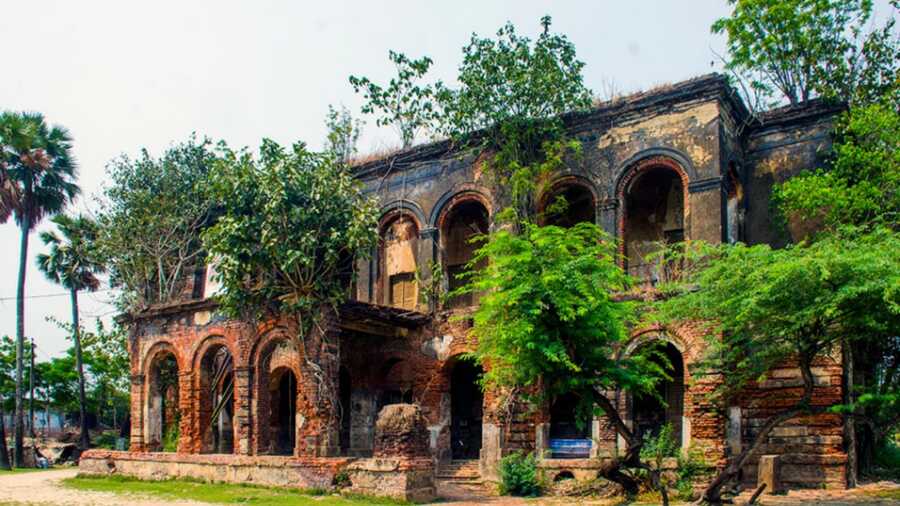The Chowmahalla Palace was once the residence of Asaf Jahi dynasty, popularly known as the Nizams. It is located in the heart of Hyderabad near Charminar. It presently serves as a museum showcasing the legacy of the Nizams.
History
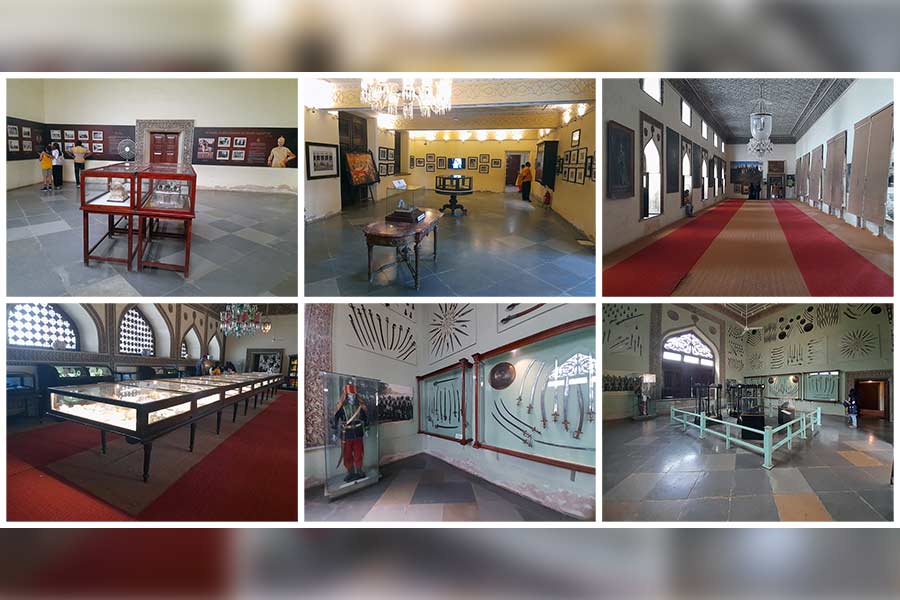
Different galleries of Khilwat Mubarak exhibiting artifacts, photographs, paintings, crockery and arms
The Chowmahalla Palace dates back to 1751 and was built on the lines of the Shah’s Palace in Tehran, Iran. The construction of the grand palace started during the reign of Salabath Jung (reign: 1851 – 62), the fourth Nizam.
Over the years, the later Nizams made several additions and modifications. A large portion of these additions were made by the fifth Nizam Asaf Jahi II (reign: 1762 – 1803). In 1769, he added the four mansions of Taniyahat Mahal, Mehtab Maghal, Afzal Mahal and Aftab Mahal. Since then, the complex has been known as the Chowmahalla Palace.
Asaf Jahi VII (reign: 1911 – 48), the last Nizam, added the grand Khilwat Mubarak. This grand palace was completed in 1916 and housed the durbar of the Nizams.
Layout

An ornate cannon at the Chowmahalla complex
Although the name suggested four mansions, the complex houses many, many more. The palace complex once covered an area of 45 acres but it has now shrunk to merely 12 acres. It is divided into two courtyards. The palaces are laid around the courtyards complete with manicured lawns dotted with flowerbeds.
The middle of the courtyard houses water reservoirs, complete with ornate marble fountains. Today, the entry is through the northern side and leads to the northern courtyard. The southern end of the northern courtyard houses the grand Khilwat Mubarak. Towards the west of the Khilwat Mubarak stands the grand gateway (presently not in use) complete with a clock tower.
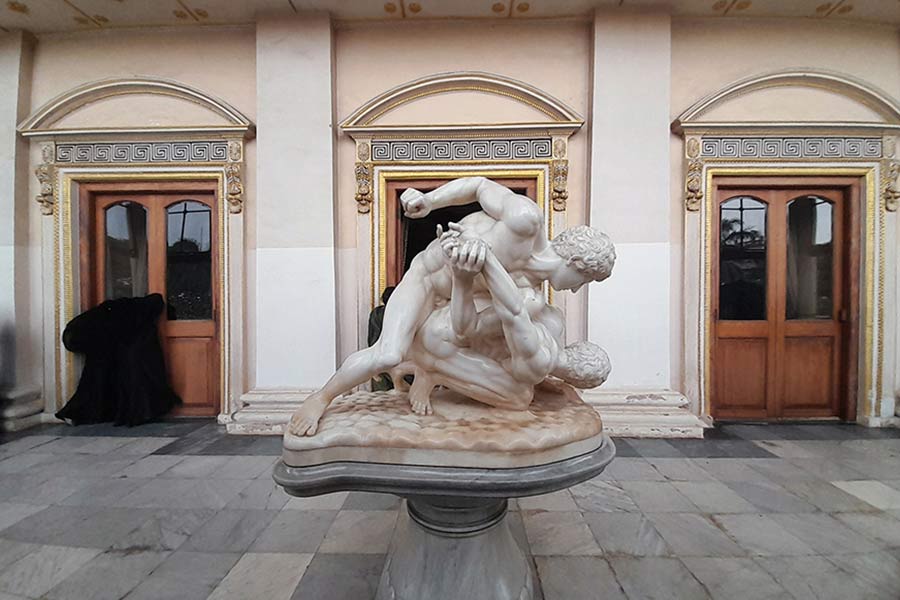
Greek-styled marble statues of two wrestlers under the portico of Afzal Mahal
South of the Khilwat Mubarak is an open lawn and further south lies the southern courtyard. Complete with a pool and fountain, the southern courtyard houses the Taniyahat Mahal at the northern end and Afzal Mahal at the southern end. The eastern and western ends of the southern courtyard are flanked by Aftab Mahal and Mehtab Mahal, respectively.
Apart from the five palaces and clock tower, the Chowmahalla complex houses several other mansions, which includes Roshan Bangla, Bara Imam and many more. The architecture style is a blend of Indo-Saracenic and Neo-Classical architecture.

Restoration
The Nizam lost power in 1948, when India annexed Hyderabad state via Operation Polo. But the Chowmahalla Palace remained a property of the Nizam. The conservation work of the Chowmahalla Palace was initiated by Esra Birgen, daughter-in-law of the last Nizam Asaf Jahi VII. After half a decade of restoration, the place complex was brought back to its former glory. In 2005, the palace, along with museum, was opened to the public. In 2010, the restoration process was presented with the UNESCO Asia Pacific Merit Award. Presently, the complex is open to public and serves as a museum, showcasing the rich legacy of the Nizam.
Khilwat Mubaraak Museums
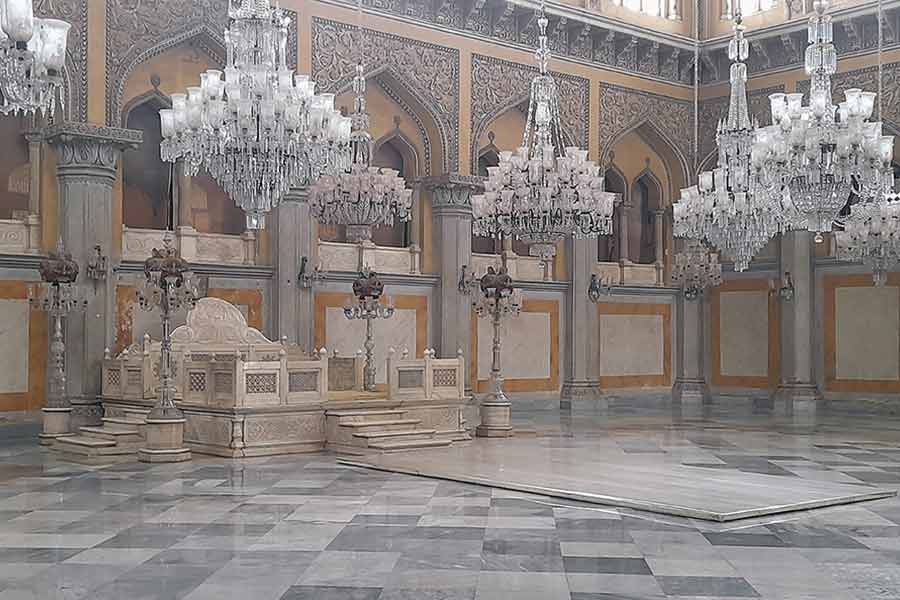
Durbar hall of Khilwat Mubarak with its ornate chandeliers made from Belgian glass
The beautifully laid-out huge campus of Chowmahalla Palace houses several museums and exhibits. The centre of attraction is the magnificent Khilwat Mubarak. It houses the Nizam’s durbar, complete with a marble throne. Supported by ornate marble pillars, the durbar hall is illuminated by 19 massive chandeliers made of Belgian glass. Apart from the durbar hall, the ground floor of the two-storeyed Khilwat Mubarak houses the people and places gallery and the zenana photo gallery.
The first gallery houses several exhibits and information boards narrating the history of the Nizams. The photo gallery depicts the life inside the Chowmahalla Palace with a series of vintage photographs with the oldest one dating back to 1873. The first floor has four galleries. Two of which are dedicated to art and craft. The other two are dedicated to crockery and armoury. Another hall on the western side of the ground floor of Khilwat Mubarak houses a Koran gallery. The gallery exhibits beautifully calligraphed hand written Korans.
Other museums and exhibits
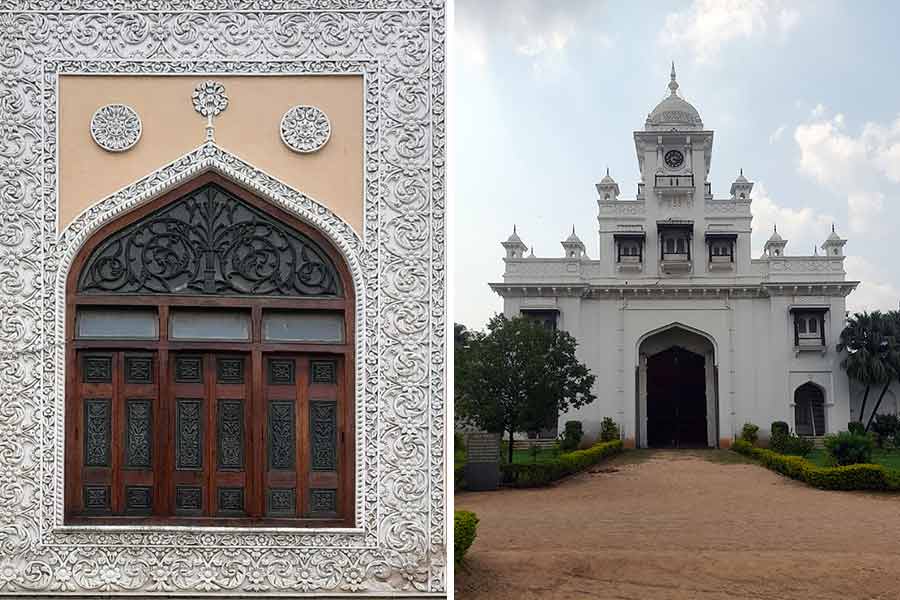
Ornate stucco work and decorative windows from Khilwat Mubarak and (right) the clock tower of Chowmahalla complex
Apart from Khilwat Mubarak, the Chowmahalla Palace complex houses several other museums. This include the Aftab Mahal, located at the eastern end of the south courtyard houses several exhibits depicting the life of the royal ladies. Beneath the portico of Afzal Mahal, south of south courtyard, stands a beautiful Greek-style marble statue of two wrestling men.
No trip to Chowmahalla Palace is complete without a visit to the vintage car and buggies khana gallery. Located at the south-eastern corner of the complex and behind Afzal Mahal this exhibit is not to be missed. It contains a vast assortment of vintage and classic cars used by the Nizams. The exhibits also showcase a couple of vintage motorcycles. Next to the car gallery is the buggy khana exhibiting several of the luxurious horse carriages used by the Nizams.
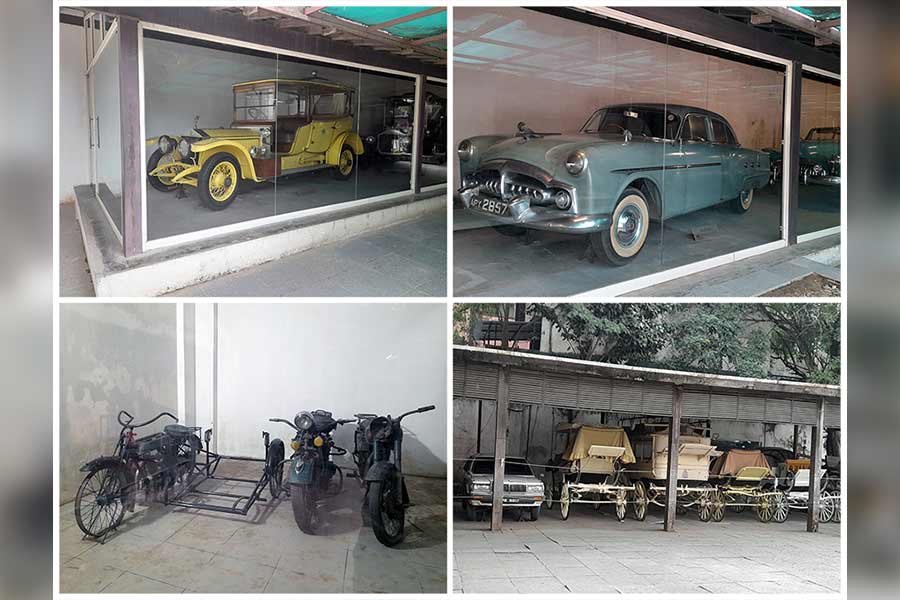
The car gallery and buggie khana showcase vintage & classic cars and motorcycles along with luxury horse carriages
Apart from this the complex houses several other exhibits. In fact, the entire complex with its decorative marble fountains and massive ornate cannons can be considered as an open-air museum. The complex also houses a small souvenir shop, an ideal place for bringing back memories of the amazing Chowmahalla Palace.

Exhibits at Aftab Mahal





